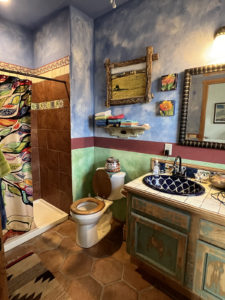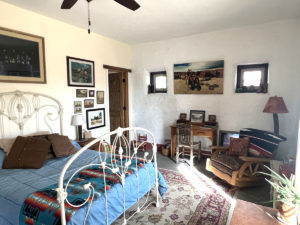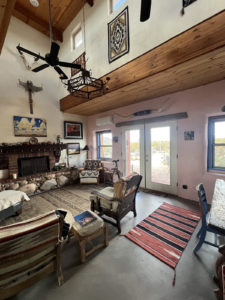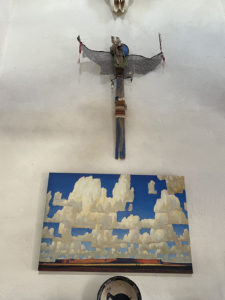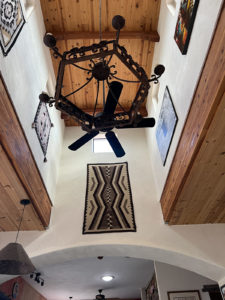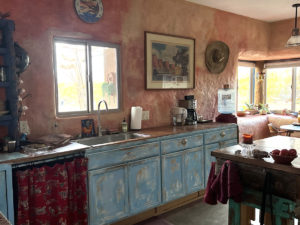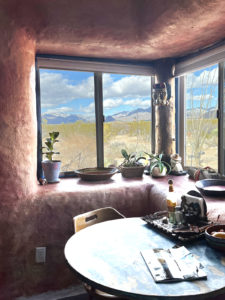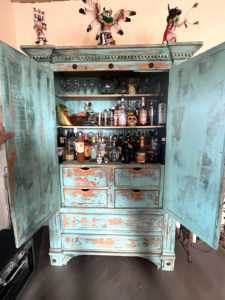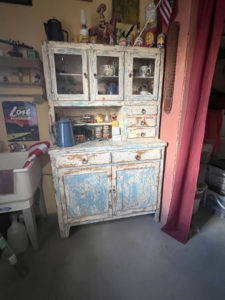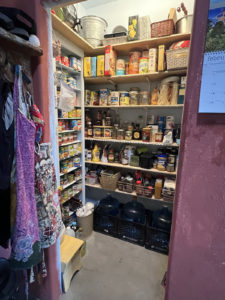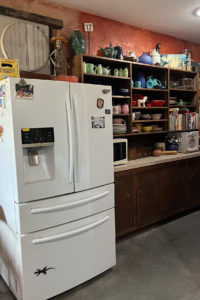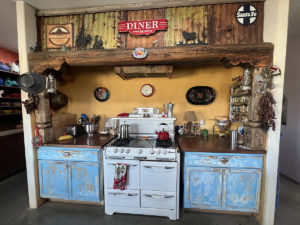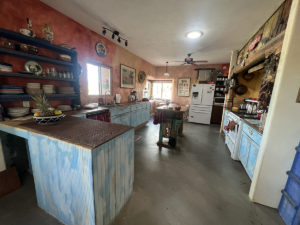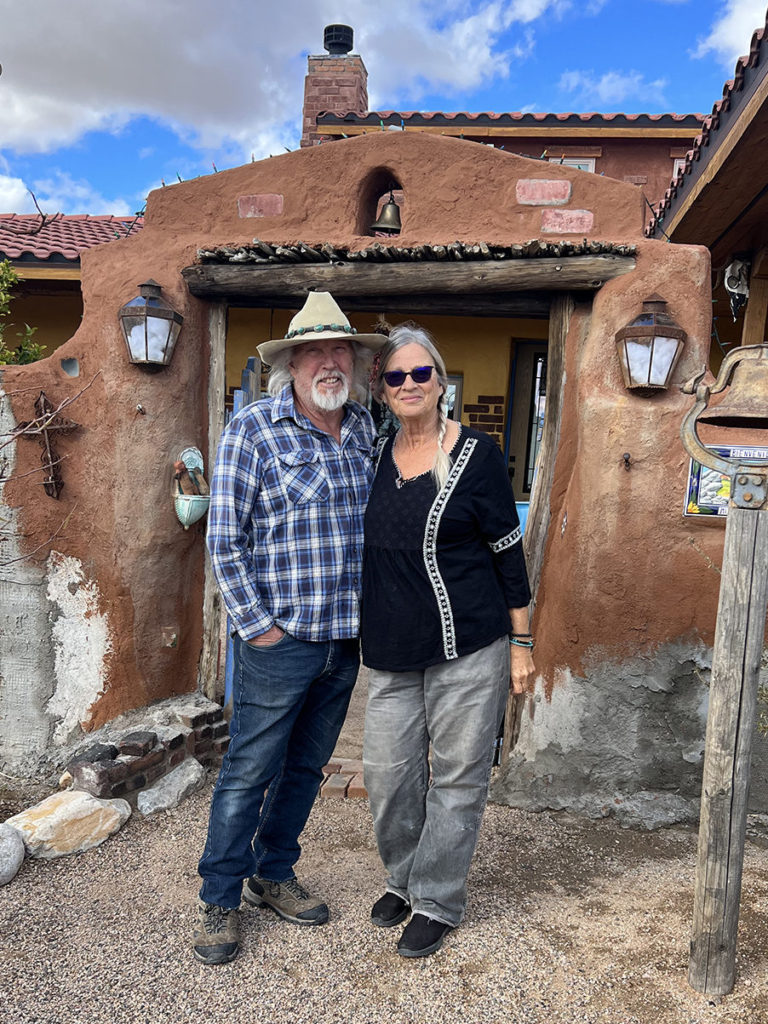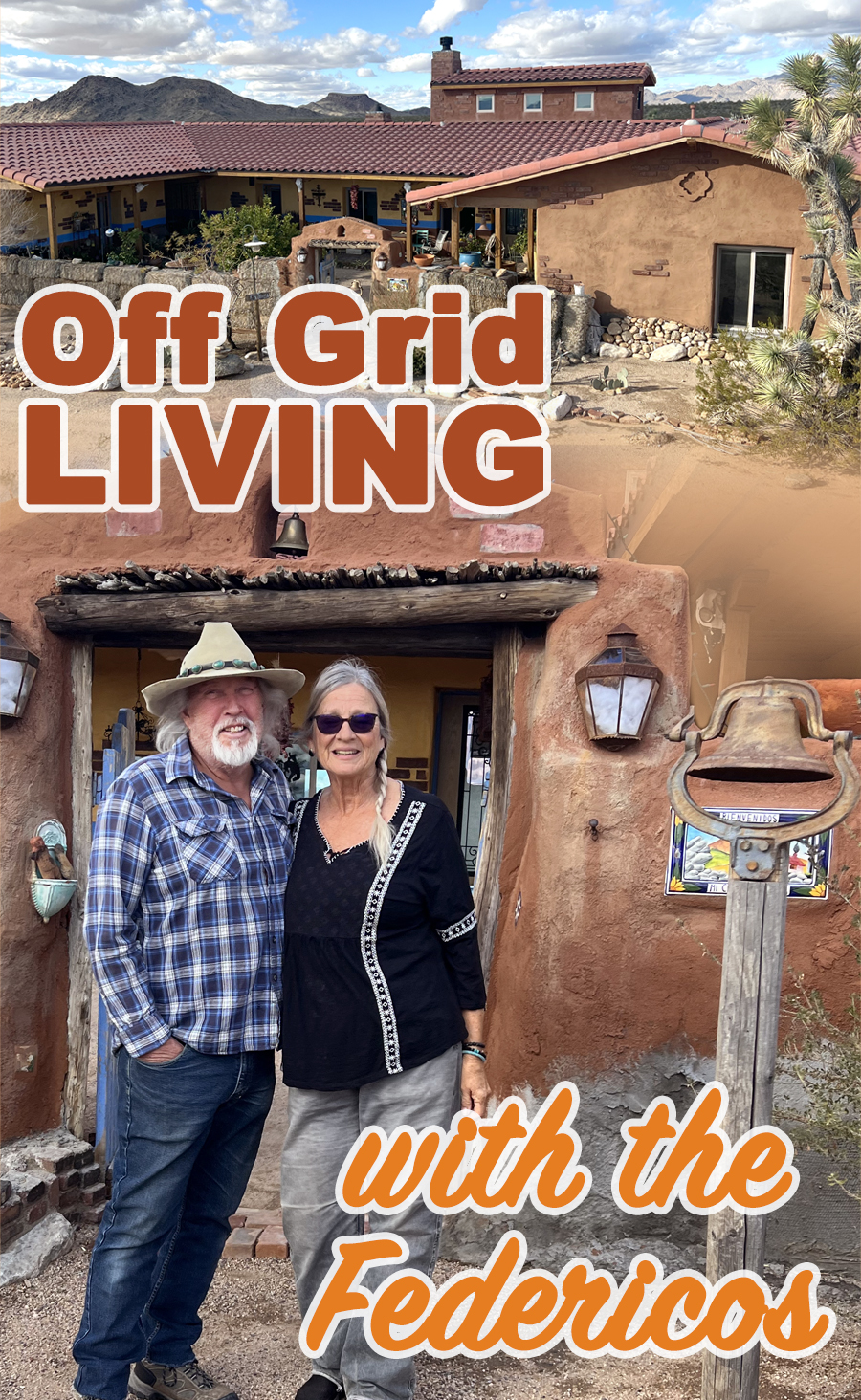Off Grid Living – Part 3
Location, Location, Location
Jim and Mary Federico have always loved two things: art and straw bale architecture with it’s amazing insulation and thick walls that look like traditional adobe. When planning their retirement, they spotted an advertisement in USA Today and stopped to look at land about 15 miles off the interstate highway, an hour from town and way off grid. They were SOLD when they saw the views from their end of the road haven. Then came the challenge of building and living off grid.
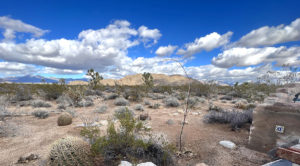
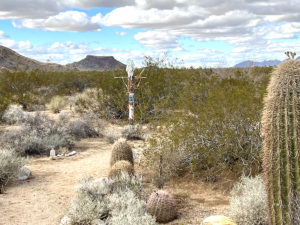
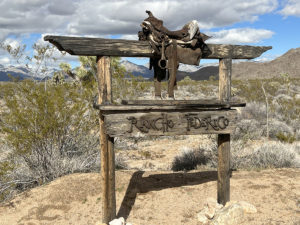
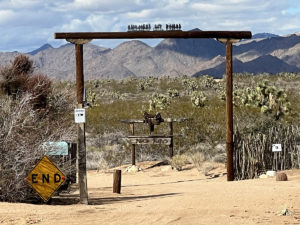
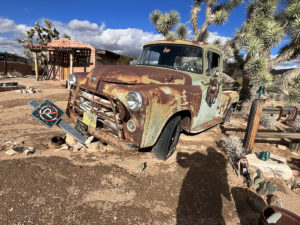
Off Grid Living Their Way
First, the Federicos bought the original 40 acres they now call Rancho Federico in 2001. Then, they later expanded to 80 acres. Their property also backs to state land. The solitude makes it seem like there is no one for miles around! Their ultimate goal was to build their Spanish style straw bale home around a courtyard with their detached artist studio for Mary and “ghost town” out buildings including Jim’s art studio, but they had to start small. They were able to eventually build the perfect straw bale custom home to incorporate art as well as showcase their art collection.
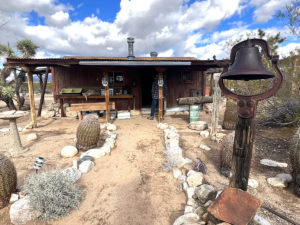
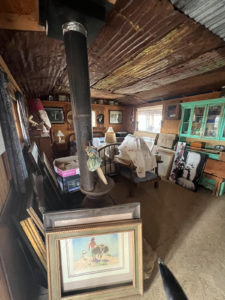
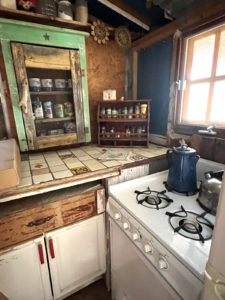
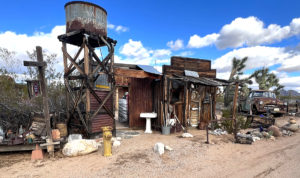
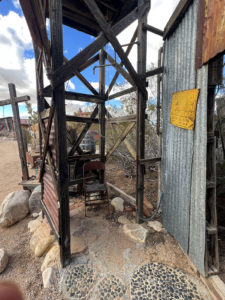
Small Beginnings
Originally, they started out living in a tiny cabin still on the property. It was an open room with a kitchenette, a pot bellied wood stove for heat and an enclosed patio made almost exclusively from reclaimed materials. Just outside of the cabin, their “old west train station” water tank is actually their original outdoor shower.
They love rustic, eclectic looking decor and intentionally built their sheds and cabin to have an aged appearance, mostly with reclaimed materials, scraps, and free curb alerts. They have seamlessly blended new with old throughout their property.
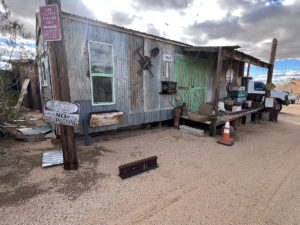
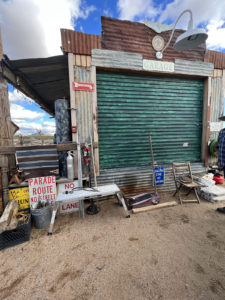
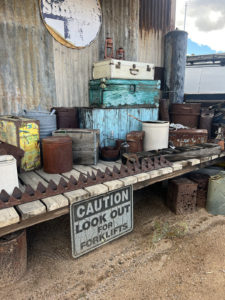
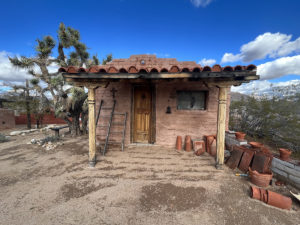
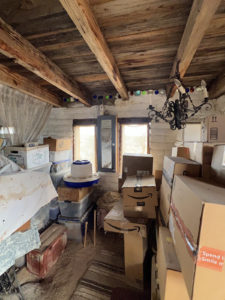
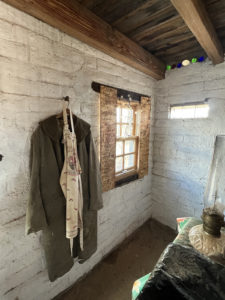
Planning Their Artistic Refuge
Many years ago, they first time they saw a straw bale building in Sonoita, Arizona. They commented on how beautiful the thick-walled adobe-style restaurant was and the friends they were dining with pointed out that it wasn’t actually an old adobe building, but instead a straw bale constructed building. They were amazed!
That experienced lingered in both Jim and Mary’s mind and led them to go to a straw bale building class in Oregon taught by Andrew Morrison of StrawBale.com. They enjoyed the experience and learned so much about the process that they decided it was definitely the right way to go for their home.
In 2014, the Federicos worked with an architect to design the plans for their custom straw bale dream home with a two-story open living room. Then, they again contacted Andrew Morrison of StrawBale.com and also a local builder, Country Haven Homes LLC of Yucca, AZ, to build their dream home.
Country Haven Homes put in the foundation and framed the walls. Then, the 31 StrawBale.com crew and workshop students plus an additional 20 friends and family arrived to stack the bales for all the walls in ONE WEEK! The Federicos and their friends were responsible for serving 150 meals a day for all the crew for that week. It was quite an undertaking!
The home was started in January 2015 and they moved in in June the same year, although the home wasn’t fully completed and signed off on until November 2015.
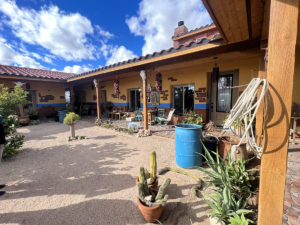
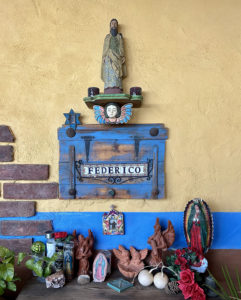
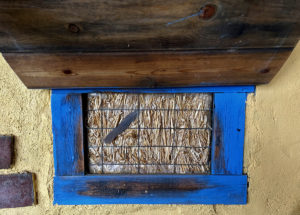
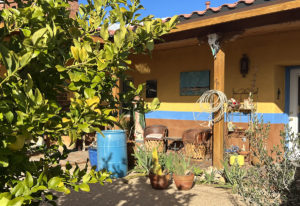
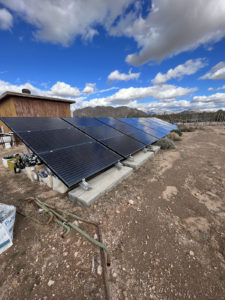
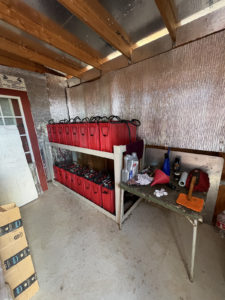
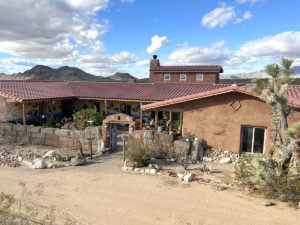
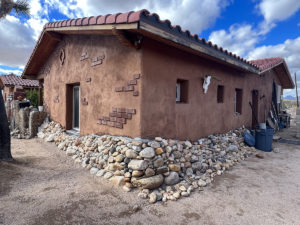
Building with Straw Bales
The Federicos explain that there’s a lot involved in stacking the bales correctly and securing them. The ultimate physical endurance challenge was stuccoing over all the walls (inside and out in). It was very labor intensive! There is still an occasional straw visible through the stucco, but the Federico’s love that it adds personality to their home.
StrawBale.com shares statistics that straw bale construction homes are “3x more energy-efficient than conventional framing, saving 75% in energy costs! Straw bale houses 3x more fire-resistant than conventional homes…They perform much better in earthquakes, are more resistant to pests/vermin, have much healthier indoor air quality, can save the owner a lot of money, and when built well, have longevity that outweighs conventional housing. Straw bale construction is officially part of the national residential code.” The Federicos also insist that the house is supremely quiet with the noise deadening that the straw provides.
Making it Special
Later, the Federicos discovered that the original bricks from the El Garces Train Station and Harvey House in Needles, California were being discarded as the station was being refurbished. They jumped on the opportunity to have a piece of history incorporated into their home! They made 10 trips back and forth to Needles, approximately an hour each way, in their van to haul the blocks to their new home. Fortunately, Jim is an experienced stone mason and block layer and created a fabulous courtyard sidewalk with the bricks.
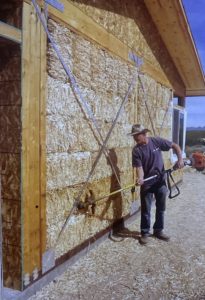
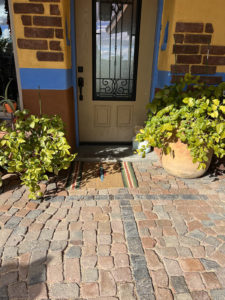
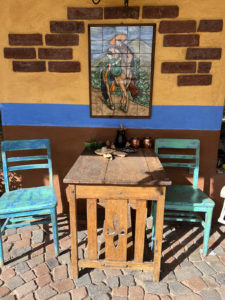
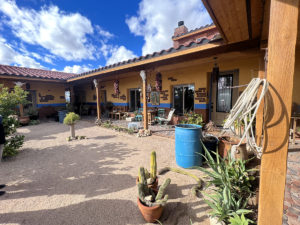
Mary’s art studio
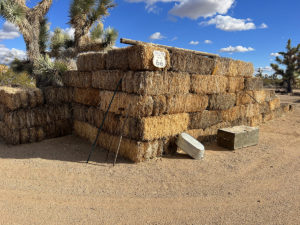
An Artistic Off Grid Hideaway
Jim and Mary are both art collectors and artists. They have integrated into the local art community with showings at the Kingman Centre of the Arts (Beale and 4th Street in Kingman, AZ) among other venues and offering paintings and sculptures for sale to the public. Jim may be contacted by email at [email protected], on Facebook at Rancho Federico, or Instagram at JP.Federico.artist.
In 2018, Jim photographed the finished home and submitted it and an article about the building process to Etched magazine 2018 Outdoor edition. It was chosen as the cover and feature article of that publishing.
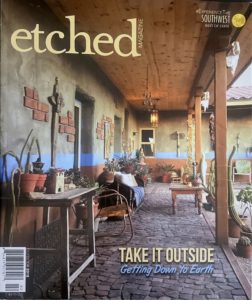
Outdoor Edition 2018
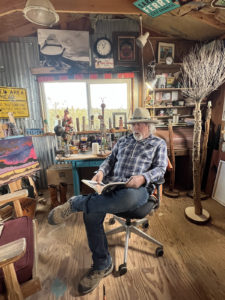
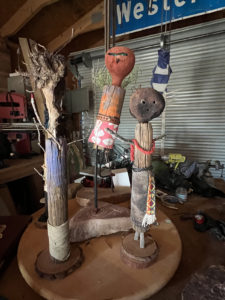
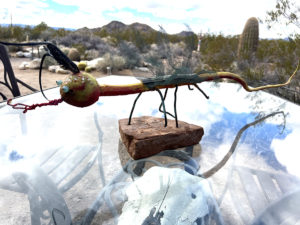
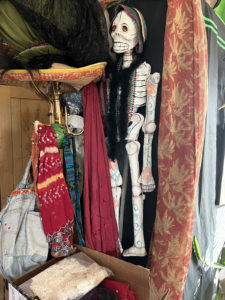
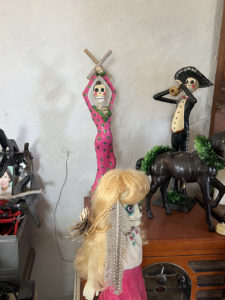
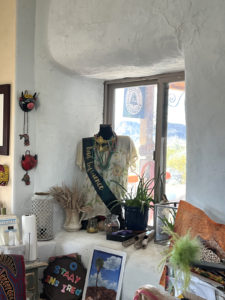
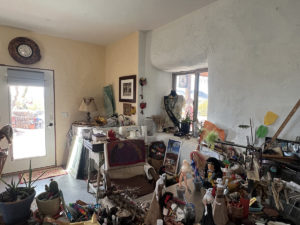
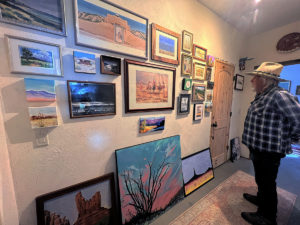
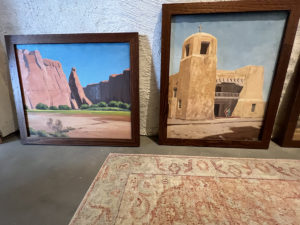
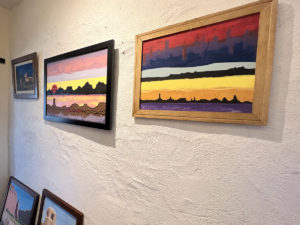
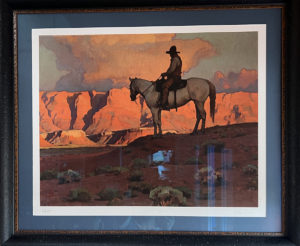
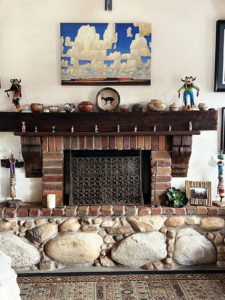
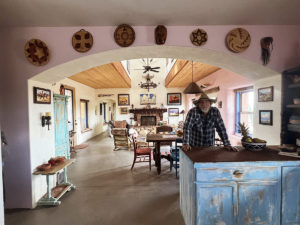
Off Grid Living Advice
Jim and Mary love their home and their life and they wouldn’t have it any other way! However, they do have a word of caution. They have struggles, as do all homesteaders. In Mary’s words, “It’s not for everyone. It’s not easy all the time.”
When their solar system was finally installed and wired into the house, Mary says she ran to plug in the coffee pot! They had been using a percolator to make coffee on the stove since they first started staying at their property.
The Federico’s well had to be drilled to 1250 feet deep to hit water in their area. Unfortunately, there aren’t many pumps that can pump from that depth and are affordable on a retirement fixed income so they have water delivered. Occasionally, water delivery people have been unreliable and they have had to REALLY conserve water to avoid running out completely. They are currently using rain barrels to collect water and supplement irrigating their desert trees and potted plants.
Jim and Mary are also currently facing the large expense of replacing their aging battery banks for their solar system which are starting to fail. They have meticulously maintained their batteries, but they are now 8 years old. This will be a large expense, but it’s one that all off-grid families face on a regular basis.
Farewell
Ultimately, Jim and Mary are living their best life and they embrace it fully! They love scouring the desert for antiques, treasures, old bullets and cow skeletons – anything to make more art or add to their home decor!
If you enjoyed this interview, don’t miss out on my other Off Grid Living interviews: The Petersen’s Straw Bale Retirement Home, Jan Emming (papercrete home) and Tina Payton (A Woman and her Burros)! Also, make sure to subscribe so you never miss out on news from The Far Out Farm!
